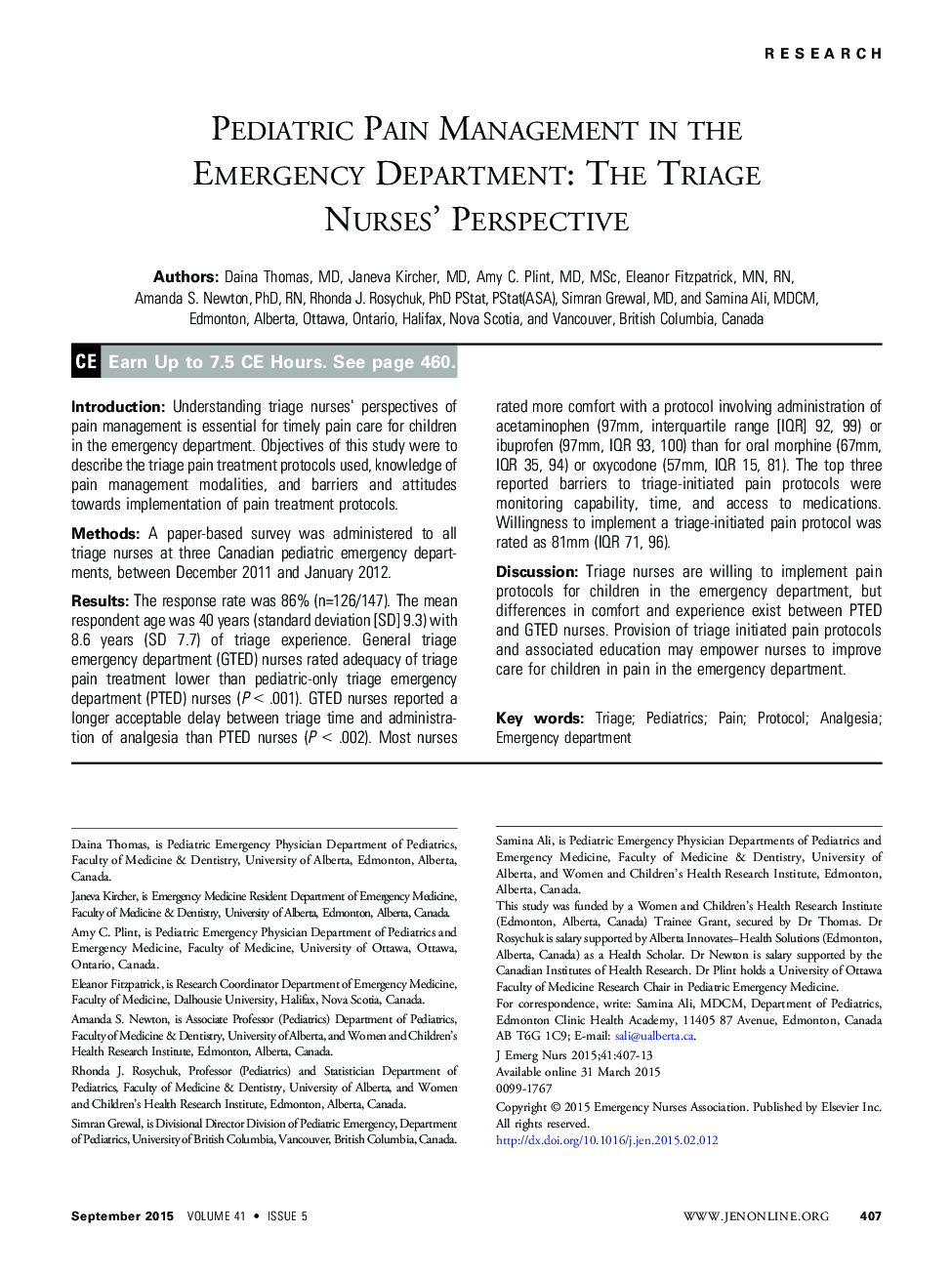| Article ID | Journal | Published Year | Pages | File Type |
|---|---|---|---|---|
| 2609905 | Journal of Emergency Nursing | 2015 | 7 Pages |
IntroductionUnderstanding triage nurses' perspectives of pain management is essential for timely pain care for children in the emergency department. Objectives of this study were to describe the triage pain treatment protocols used, knowledge of pain management modalities, and barriers and attitudes towards implementation of pain treatment protocols.MethodsA paper-based survey was administered to all triage nurses at three Canadian pediatric emergency departments, between December 2011 and January 2012.ResultsThe response rate was 86% (n=126/147). The mean respondent age was 40 years (standard deviation [SD] 9.3) with 8.6 years (SD 7.7) of triage experience. General triage emergency department (GTED) nurses rated adequacy of triage pain treatment lower than pediatric-only triage emergency department (PTED) nurses (P < .001). GTED nurses reported a longer acceptable delay between triage time and administration of analgesia than PTED nurses (P < .002). Most nurses rated more comfort with a protocol involving administration of acetaminophen (97mm, interquartile range [IQR] 92, 99) or ibuprofen (97mm, IQR 93, 100) than for oral morphine (67mm, IQR 35, 94) or oxycodone (57mm, IQR 15, 81). The top three reported barriers to triage-initiated pain protocols were monitoring capability, time, and access to medications. Willingness to implement a triage-initiated pain protocol was rated as 81mm (IQR 71, 96).DiscussionTriage nurses are willing to implement pain protocols for children in the emergency department, but differences in comfort and experience exist between PTED and GTED nurses. Provision of triage initiated pain protocols and associated education may empower nurses to improve care for children in pain in the emergency department.
